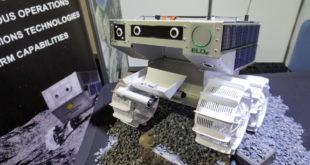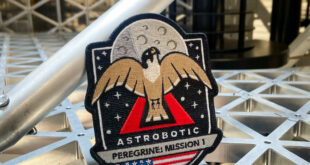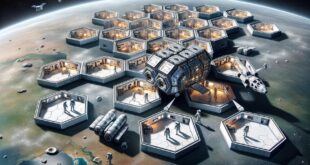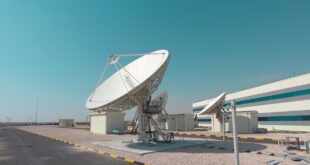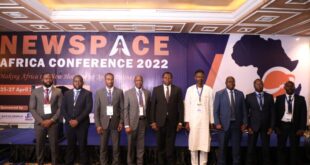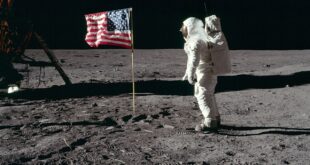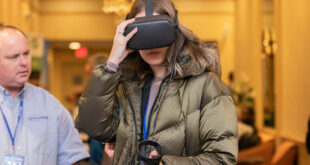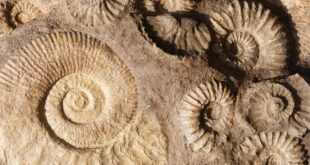STEM and Space education is crucial for the future of our world. The workforce of the future need to be inspired and see a career in space as a viable opportunity. Seen as viable not just by young people but by parents, teachers and industry. Inspiration is key and the best way to inspire is to engage. That’s what STEM and Space education organisation One Giant Leap Australia does best.
Read More »#SpaceWatchGL Frontiers | Peregrine Mission 1: the odds catch up
By nighttime stateside, early European/Middle East/Africa morning today, and mid-day in Asia, the successfully launched Astrobotic Peregrine lander was confirmed having run into problems terminally dooming Mission 1. Astrobotic’s confirmed the issue reporting on their social media and press releases. And like with any failure, let’s take a healing look at facts and lessons learned. The first lesson is the obvious one: yes, space is hard.
Read More »#SpaceWatchGL Opinion: Crafting new solutions to avert an arms race in outer space
GPS signals that guide civilian aircraft in the Middle East and Ukraine are being jammed and spoofed, diverting flights and risking the safety of all onboard. Meanwhile, diplomats from 25 countries met again in Geneva to consider possible elements of a legally binding agreement to prevent an arms race in outer space (PAROS). Both situations arise from decades of unsuccessful diplomatic attempts to ensure that outer space – a shared, global environment on which the entire world depends – remains peaceful and available to all.
Read More »#SpaceWatchGL opinion: The Future of Living: Earthly Lessons for Martian Homes
Ever gazed at the stars and wondered how our interstellar abodes on Mars or the Moon might appear? The mere thought sends a pulse of excitement through us — not just because we imagine these galactic shelters as high-tech wonders, but as life sources in harsh terrains. The design intricacies of these extraterrestrial habitats will be the lifeline for the space pioneers of tomorrow. But let's bring our feet back to our home planet for a moment. How evolved are we in designing homes on Earth that resonate with our holistic well-being and health?
Read More »#SpaceWatchGL Interviews: Es’hailSat – Qatar Satellite Company “Illuminating the Path to Excellence in Satellite Operations”
SpaceWatch.Global CEO and Publisher Torsten Kriening interviewed Ali Al Kuwari, Es’hailSat’s President and CEO, about the plans and future of the Qatari satellite company.
Read More »#SpaceWatchGL Opinion: How Africa and Europe May be Compromising Private Sector Participation in the African Space Industry
Africa, much like the US, Europe, and China, has demonstrated its interest in using space as a means to a societal end. In Africa’s case, the continent has awakened to how space, specifically space science and technology, can assist in addressing Africa’s social and economic challenges. The way the African Space Strategy puts it, Africa needs “an integrated, prosperous and peaceful Africa, driven by its own citizens and representing a dynamic force in the global arena." The rapid global development of spatial activities is a nifty representation of the fact that the same awakening happened in other parts of the world way before Africa. This may mean that Africa is late to the party, but perhaps it's more encouraging to see it as Africa being able to learn the best model for space development from other more advanced spacefaring nations.
Read More »#SpaceWatchGL Geopolitics: Make America Great Again, again.
by Christophe Bosquillon At most conferences, there’s always the excuse of a plane to catch if you want to skip that last lunch keynote address. In the case of the latest von Braun Space Symposium thou, it would have been ill-advised. Mike Griffin delivered a compelling call to arms …
Read More »#SpaceWatchGL Opinion: Maine tackles the global space economy
The Maine Space Conference took place in-person and online on November 5-7, 2023, in Portland, Maine. This event marked a significant milestone for the state (a video summary can be watched here). Maine is a state on the US northeastern coast that shares borders with Canada: quite convenient to reach polar orbits. While contemporary Maine might not strike you as a “space state” like of Florida, Texas, or Colorado, it turns out the countrie's industrial and technological base is positioned to be a growing contributor to the US and global space economy
Read More »#SpaceWatchGL Opinion: Biomimicry for space exploration
Imagine that we are part of a group responsible for planning a space journey, and our primary guiding principle is to use biomimicry as a tool to inspire the solutions we will need to develop. "Biomimicry involves solving problems by studying and emulating natural processes. For example, the design of whale-inspired wind turbines draws inspiration from the humpback whale." These studies have been done through the observation of behaviors and characteristics of all types of living creatures living in this world. It holds the key to billions of years of research and development of sustainable, circular, and regenerative solutions.
Read More »#SpaceWatchGL Geopolitics: 2023 European Space Summit: the Barber of Séville, Reloaded
“Strategic Autonomy“is a bit like “Diversity”: you can keep repeating all day that mantra for space access, but that alone doesn’t make it happen. How much of a game changer was the early November 2023 European Space Summit in Séville?
Read More » SpaceWatch.Global An independent perspective on space
SpaceWatch.Global An independent perspective on space

